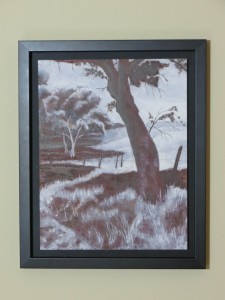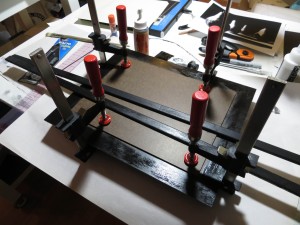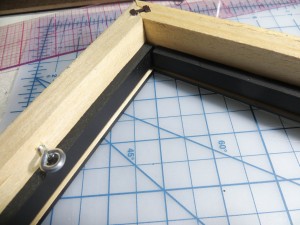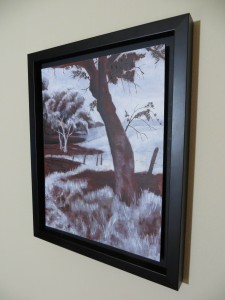I have a piece in Lay of the Land: Student Landscape Exhibition at the Rosen Gallery at Gage Academy. The opening reception is Friday, January 18 from 6pm to 8pm and will feature a reception, lecture, and book signing for Tom Hoffmann’s Watercolor Painting: A Comprehensive Approach to Mastering the Medium. The exhibit runs until February 15th.
My painting looks great, but it was a nightmare to frame. The nightmare started long before I started the painting, when the supply list for a course suggested in error that we bring gesso’d watercolor paper on the first day. It turns out the supply list was for a different course, but I had already spent hours lovingly applying gesso and sanding and I was determined to use the paper. Unfortunately the paper was also metric.
When it came time to frame the piece I had to mount the paper on a board specially cut to the metric dimensions and then I had to jury rig my own float frame because the metric painting wouldn’t fit in a standard-sized frame. Here’s what the entire stack looked like:
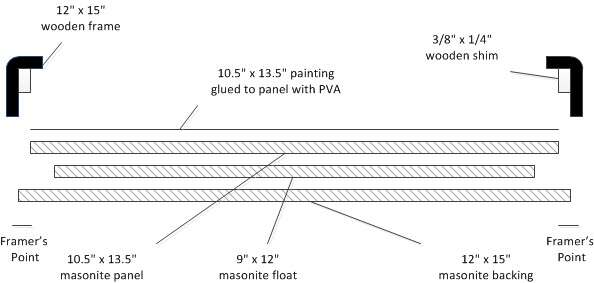
It took quite a while to locate and cut all of the pieces, especially the 3/8″ x 1/4″ shims that ensure the floating painting is positioned behind the front of the frame. Then I had to clamp and glue all of the pieces and apply lots of black paint. To look good, the edges of the painting panel had to be black, along with the shims which are visible from the front, and the backing panel which is also visible through the gap between the painting and the frame.
I tried painting first by hand using acrylic paint, but it was glossy and the brush strokes looked horrible. I then sanded it off and switched to flat black spray paint which looked better, but didn’t work well on the unprimed masonite. The masonite just kept absorbing the black paint and getting darker, but it still looked brown. Then after many coats, I got drips in the paint and when I tried to wipe them off with a piece of newsprint, it disintegrated, leaving fibers all over the paint. After lots of painting and sanding and repainting I finally got something that looks pretty good. Then I went over all of the bad miter joints with a fine point black marker and called it a day.
My lessons for the future are to use standard size supports for my paintings (which would have allowed me to purchase a ready-made frame) and to use canvas on stretchers (which are trivial to float mount, compared to watercolor paper).

